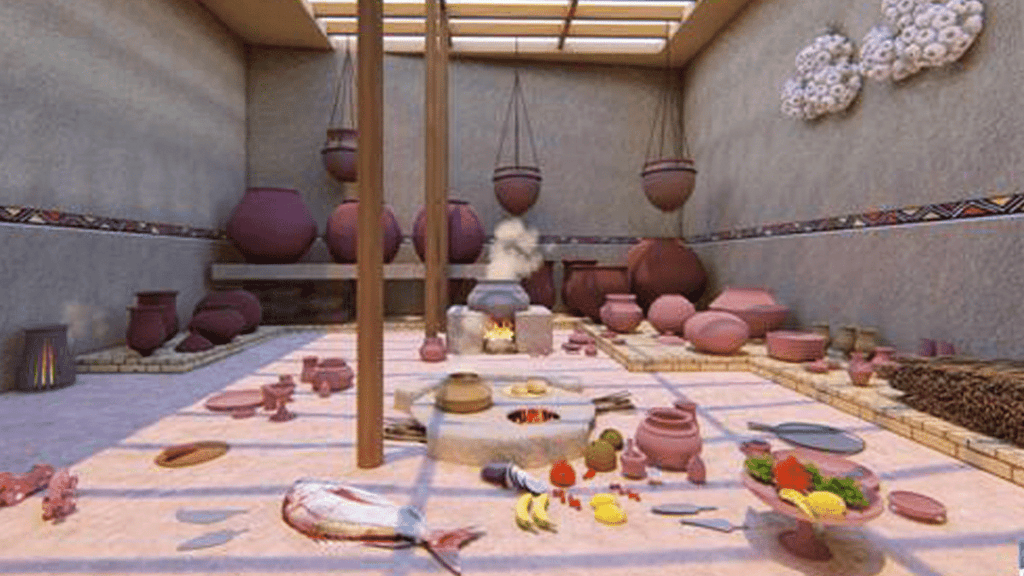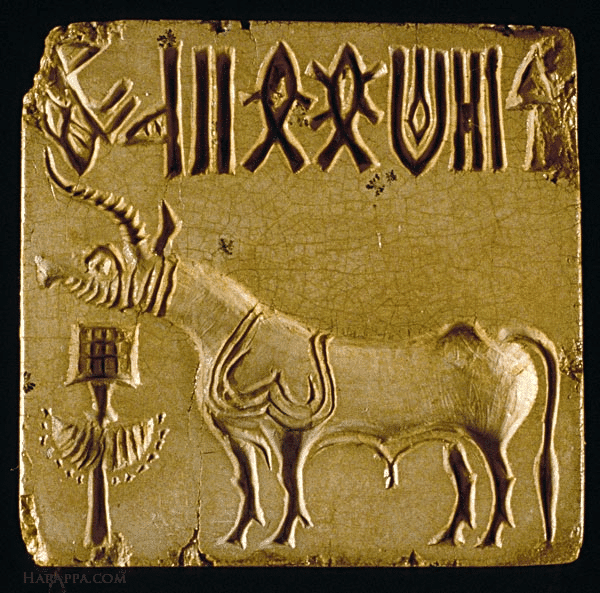Mnemonics: The Beginnings of Indian Civilisation | Social Studies for Class 6 PDF Download
1. Characteristics of a Civilization
Mnemonic: “Govern Well, Cities Plan, Crafts Trade, Write Culture”
- Govern → Government (Organizes society, administration)
- Well → (Reinforces effective governance)
- Cities → Urbanism (Planned towns/cities, e.g., drainage systems)
- Plan → (Reinforces city planning)
- Crafts → Variety of crafts (Jewelry, tools from stone, metal)
- Trade → Trade (Local and long-distance exchange of goods)
- Write → Writing (Record-keeping, communication)
- Culture → Cultural ideas (Art, architecture, beliefs)
Mnemonic Explanation: This phrase sequences a civilization’s traits—governing well, planning cities, crafting and trading, and writing culture. It covers government, urbanism, crafts, trade, writing, and cultural expression, with a narrative of societal advancement.
How to Use: Visualize leaders governing, cities planned, artisans crafting, traders exchanging, and scribes writing culture. Link each word to its characteristic (e.g., “Govern” = Administration). Test by recalling: government (organizes), urbanism (cities), crafts (jewelry), trade (exchange), writing (records), culture (art, beliefs).
2. First Urbanization of India (Harappan/Indus-Sarasvati)
Mnemonic: “Villages Grow, Cities Rise, Harappa Names”
- Villages → Villages to towns (From 3500 BCE, Punjab, Sindh, Sarasvati basin)
- Grow → (Reinforces development)
- Cities → Towns to cities (By 2600 BCE, first urbanization)
- Rise → (Reinforces urban growth)
- Harappa → Harappan civilization (Named after Harappa, excavated 1920–21)
- Names → (Reinforces naming convention)
Mnemonic Explanation: This phrase depicts villages growing into towns, cities rising, and Harappa naming the civilization. It covers the transition from villages to cities (3500–2600 BCE) and the civilization’s naming (Harappa, Indus-Sarasvati), with imagery of urban evolution.
How to Use: Picture villages growing, cities rising, and Harappa’s name enduring. Link each word to its phase (e.g., “Villages” = 3500 BCE). Test by recalling: villages (Punjab, Sindh), cities (2600 BCE), Harappan (named after Harappa).
3. Town Planning and Architecture
Mnemonic: “Streets Align, Walls Guard, Bath Cleans”
- Streets → Planned streets (Wide, cardinal directions, e.g., Mohenjo-daro)
- Align → (Reinforces orderly layout)
- Walls → Fortifications (Defensive walls around cities)
- Guard → (Reinforces protection)
- Bath → Great Bath (Mohenjo-daro, 12x7m, waterproof, possibly ritualistic)
- Cleans → (Reinforces water use)

Mnemonic Explanation: This phrase shows streets aligning, walls guarding, and the Great Bath cleaning. It covers Harappan town planning (streets, upper/lower towns), fortifications, and the Great Bath’s significance, with a narrative of structured urban life.
How to Use: Visualize aligned streets, guarded walls, and a bath for rituals. Link each word to its feature (e.g., “Streets” = Planned). Test by recalling: streets (cardinal directions), fortifications (walls), Great Bath (waterproof, ritual).
4. Water Management
Mnemonic: “Drains Flow, Wells Supply, Reservoirs Store”
- Drains → Drainage system (Under streets, wastewater disposal)
- Flow → (Reinforces drainage efficiency)
- Wells → Water sources (Brick wells, ponds, streams, e.g., Mohenjo-daro)
- Supply → (Reinforces water access)
- Reservoirs → Large reservoirs (e.g., Dholavira, 73m long, water storage)
- Store → (Reinforces water harvesting)
Mnemonic Explanation: This phrase depicts drains flowing, wells supplying, and reservoirs storing water. It covers Harappan water management (drainage, wells, reservoirs), with imagery of advanced hydraulic systems.
How to Use: Picture drains flowing under streets, wells supplying homes, and reservoirs storing water. Link each word to its system (e.g., “Drains” = Wastewater). Test by recalling: drains (under streets), wells (brick, Mohenjo-daro), reservoirs (Dholavira, storage).
5. Harappan Diet and Agriculture
Mnemonic: “Wheat Grows, Cotton Weaves, Fish Fill”
- Wheat → Cereals, pulses (Barley, wheat, millets, rice, pulses, vegetables)
- Grows → (Reinforces farming)
- Cotton → Cotton cultivation (First in Eurasia, used for clothing)
- Weaves → (Reinforces textile production)
- Fish → Animal domestication, fishing (Meat, fish from rivers/ocean)
- Fill → (Reinforces diverse diet)

Mnemonic Explanation: This phrase shows wheat growing, cotton weaving clothes, and fish filling diets. It covers Harappan agriculture (cereals, cotton), animal domestication, and fishing, with a narrative of food and textile production.
How to Use: Visualize wheat fields, cotton woven into clothes, and fish caught for meals. Link each word to its aspect (e.g., “Wheat” = Cereals). Test by recalling: cereals (wheat, barley), cotton (clothing), fishing (rivers, ocean).
6. Trade and Crafts
Mnemonic: “Beads Sparkle, Seals Mark, Ships Sail”
- Beads → Carnelian beads (Crafted, exported, Gujarat-sourced)
- Sparkle → (Reinforces artisan skill)
- Seals → Steatite seals (Trade seals with animal figures, symbols)
- Mark → (Reinforces trade identification)
- Ships → Trade routes (Land, river, sea; Lothal dockyard, 217x36m)
- Sail → (Reinforces maritime trade)

Mnemonic Explanation: This phrase depicts sparkling beads, seals marking goods, and ships sailing trade routes. It covers Harappan crafts (beads, seals) and trade (routes, dockyards), with imagery of bustling commerce.
How to Use: Picture shiny carnelian beads, seals marking trade goods, and ships sailing from Lothal. Link each word to its aspect (e.g., “Beads” = Carnelian). Test by recalling: beads (exported, Gujarat), seals (steatite, symbols), routes (Lothal dockyard).
7. Reasons for Harappan Decline
Mnemonic: “Climate Dries, Sarasvati Fades”
- Climate → Climatic change (Less rainfall ~2200 BCE, food shortages)
- Dries → (Reinforces arid conditions)
- Sarasvati → Sarasvati River drying (Central drying, abandoned cities, e.g., Kalibangan)
- Fades → (Reinforces river’s disappearance)
Mnemonic Explanation: This phrase shows climate drying the land and the Sarasvati fading away. It covers the two main reasons for decline (climatic change, river drying), with a narrative of environmental challenges.
How to Use: Visualize a dry climate and the Sarasvati River fading, abandoning cities. Link each word to its cause (e.g., “Climate” = Less rainfall). Test by recalling: climatic change (2200 BCE, drought), Sarasvati (dried, abandoned cities).
|
48 videos|307 docs|28 tests
|





















